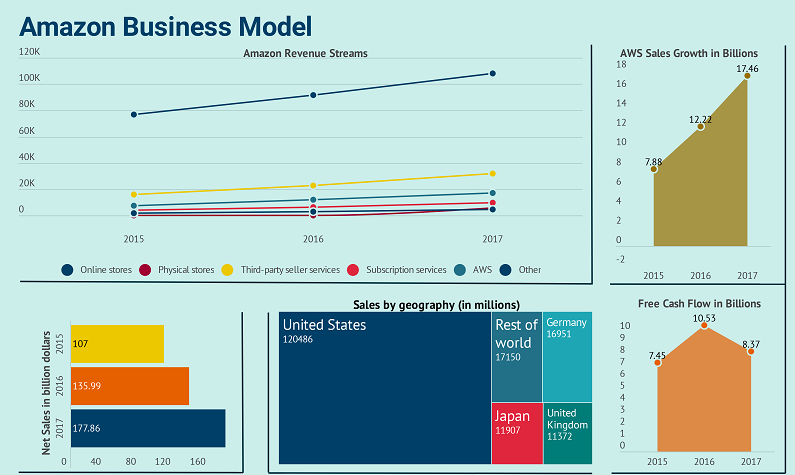The biggest giant in the field of e-commerce and retail, Amazon has built a network of supply chain unlike any other. This remarkable establishment of the new business model has completely redefined the way buying and selling processes take place. Although there are other market players in the same segment and all of them are doing well, but Amazon has surpassed all of its competitors in the past decade. The key takeaways from the business model of Amazon are listed as follows:

Contents
Amazon Has Eliminated the Need of Physical Stores
Traditionally, businesses around the world used to supply their goods to physical stores to be sold. With the invention of the internet and the discovery of a new platform for selling goods, the need for physical retail stores has decreased over time. Amazon holds its inventory in warehouses across different locations across the globe. A buyer can scroll through the catalogs available on Amazon’s website and order a delivery of the desired product. From groceries to FMCG to electronics and clothing, Amazon sells it all. And interestingly, without having the customer to physically walk into a retail store.
Customer Satisfaction Is the Key Element To Business Growth
The Amazon soon realized that selling goods online had its perks but the process was highly influenced by the customer rating and reviews. Other players in the market like this type of company, also began to include reviews and customer ratings on their products. This realization gave rise to the ranking and search optimization of products on an internal search engine to meet the customer’s need. Every business thrives on its customer’s satisfaction to stay in business and grow.
Minimalistic Distribution Channel Can Cut the Cost
Without having the need to maintain a physical retail outlet, the cost decreased tremendously. Though Amazon does not levy any fees to any of its buyers and sellers, but it does take a cut out of the profit made by the seller. Traditional distribution channels required huge capital investments in terms of establishment, maintenance, and transportation. By eliminating the need for a physical establishment, the costs were drastically reduced and profit margins increased.
Creating the Demand and Then Supplying Can Boost The Sales
Amazon has developed a unique strategy to develop its business. Demand and supply is the key player in any business. A product or service is only sold when there is a demand for it in the market. Amazon used a different approach to keep supplying the products and stay in business. It created a demand in the market. Amazon, with its fee-free business model, impregnated the users with the benefits and comfort of shopping from anywhere. Soon, the users became loyal customers of Amazon.
Thus, by cutting short on the supply, the demand for any particular product can now be increased and a higher profit margin can be secured. Apart from this, Amazon offers exclusive products and services like Kindle and Amazon Prime to gain customer loyalty.
This e-commerce giant has revolutionized the retail sector with simple yet innovative ideas. This proves that with little capital and lots of efforts and innovation, anyone can boost and grow their business.





